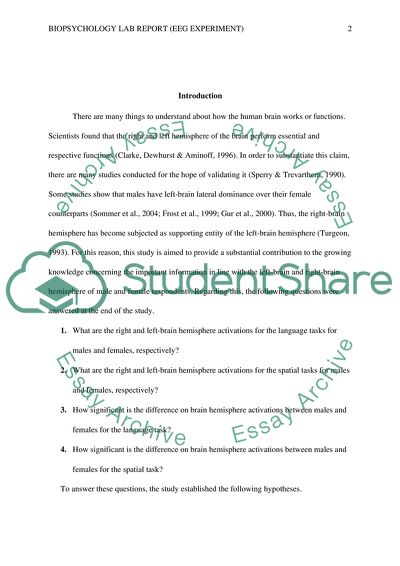Cite this document
(Biopsychology Lab Report (EEG Experiment) Research Paper Example | Topics and Well Written Essays - 3750 words, n.d.)
Biopsychology Lab Report (EEG Experiment) Research Paper Example | Topics and Well Written Essays - 3750 words. https://studentshare.org/psychology/1806143-biopsychology-lab-report-eeg-experiment
Biopsychology Lab Report (EEG Experiment) Research Paper Example | Topics and Well Written Essays - 3750 words. https://studentshare.org/psychology/1806143-biopsychology-lab-report-eeg-experiment
(Biopsychology Lab Report (EEG Experiment) Research Paper Example | Topics and Well Written Essays - 3750 Words)
Biopsychology Lab Report (EEG Experiment) Research Paper Example | Topics and Well Written Essays - 3750 Words. https://studentshare.org/psychology/1806143-biopsychology-lab-report-eeg-experiment.
Biopsychology Lab Report (EEG Experiment) Research Paper Example | Topics and Well Written Essays - 3750 Words. https://studentshare.org/psychology/1806143-biopsychology-lab-report-eeg-experiment.
“Biopsychology Lab Report (EEG Experiment) Research Paper Example | Topics and Well Written Essays - 3750 Words”. https://studentshare.org/psychology/1806143-biopsychology-lab-report-eeg-experiment.


